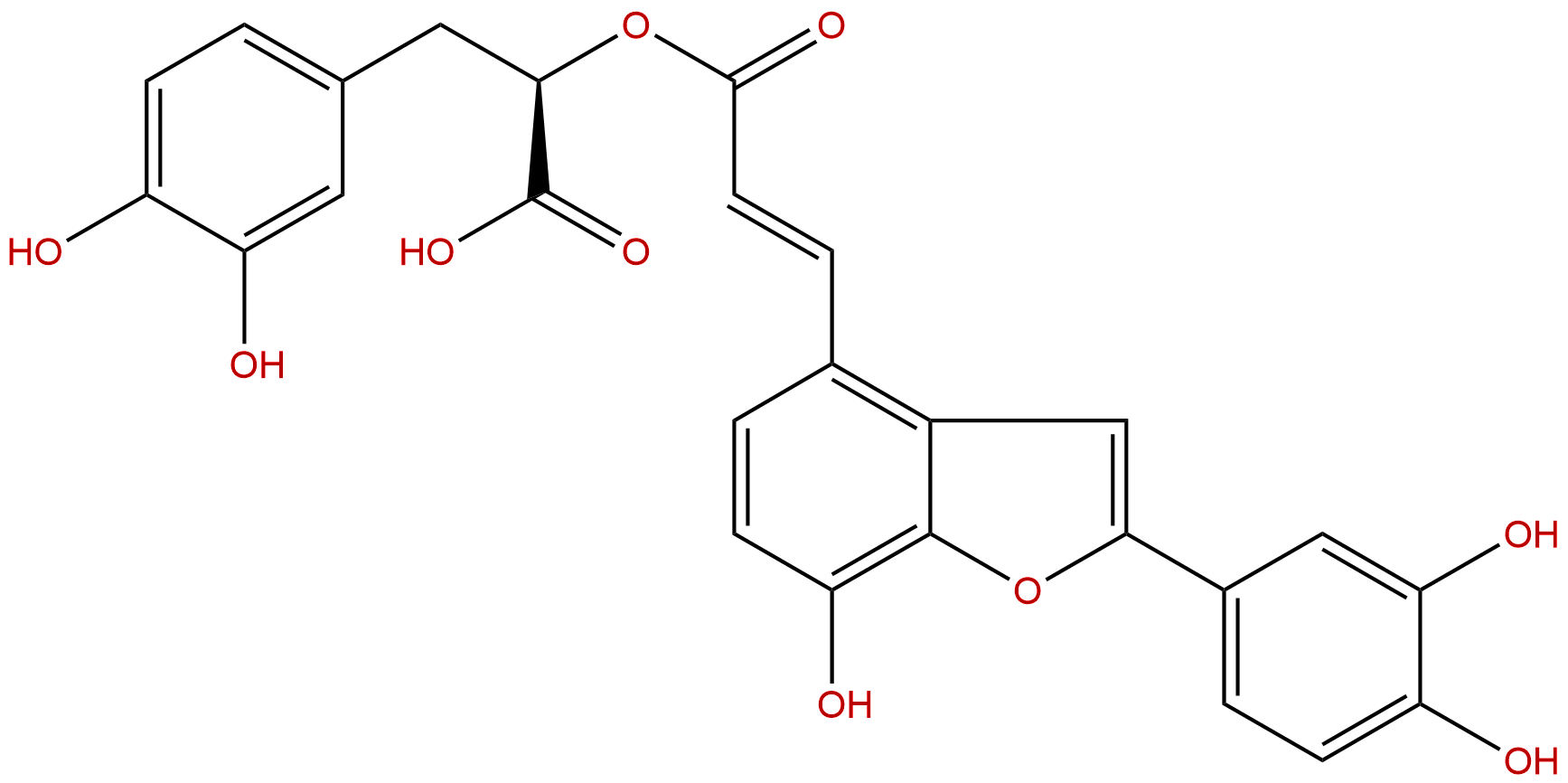
Salvianolic acid CCAS No.:115841-09-3
|
||||||||||
 |
|
|
||||||||

| Catalogue No.: | BP1249 |
| Formula: | C26H20O10 |
| Mol Weight: | 492.436 |
Product name: Salvianolic acid C
Synonym name:
Catalogue No.: BP1249
Cas No.: 115841-09-3
Formula: C26H20O10
Mol Weight: 492.436
Botanical Source: Salviae Miltiorrhizae Radix et Rhizoma
Physical Description:
Type of Compound: Stibene glucosides
Purity: 95%~99%
Analysis Method: HPLC-DAD or/and HPLC-ELSD
Identification Method: Mass, NMR
Packing: Brown vial or HDPE plastic bottle
Storage: Store in a well closed container, protected from air and light. Put into refrigerate or freeze for long term storage.
Whenever possible, you should prepare and use solutions on the same day. However, if you need to make up stock solutions in advance, we recommend that you store the solution as aliquots in tightly sealed vials at -20℃. Generally, these will be useable for up to two weeks.
The product could be supplied from milligrams to grams
Inquire for bulk scale.
Description:
Salvianolic acid C has antioxidant effect, it exhibits potent XOD inhibitory activity with an IC(50) of 9.07 μM. Salvianolic acid C enhances the inhibitory effects on sEH might be efficient ways to improve its cardiovascular protective and anti-inflammatory effects.
References:
Phytomedicine. 2015 Apr 15;22(4):444-51.In vitro inhibitory effects of ethanol extract of Danshen (Salvia miltiorrhiza) and its components on the catalytic activity of soluble epoxide hydrolase.
Soluble epoxide hydrolase (sEH) has been demonstrated to be a key enzyme involved in the pathologic development of several cardiovascular diseases and inflammation, and inhibition of sEH is therefore very helpful or crucial for the treatment of ischemia-reperfusion injury, cardiac hypertrophy, hypertension and inflammation. Danshen, the dried root of Salvia miltiorrhiza (Fam. Labiatae), has been used for the treatment of cardiovascular and cerebrovascular diseases in China and other countries for hundreds of years. Recent studies indicated that Danshen and its preparations also have potential for the management of inflammation. However, little information is available about the possibility of Danshen and its components on sEH inhibition.
METHODS AND RESULTS:
Danshen extracts and its constituents were tested for sEH inhibition using its physiological substrate, 8,9-EET, based on a LC-MS/MS assay in this study. Among the tested 15 compounds, tanshinone IIA and cryptotanshinone were found to be the potent (Ki = 0.87 μM) and medium (Ki = 6.7 μM) mixed-type inhibitors of sEH, respectively. Salvianolic acid C (Ki = 8.6 μM) was proved to be a moderate noncompetitive sEH inhibitor. In consistent with the inhibition results of the pure compounds, the 75% ethanol extract of Danshen (EE, IC50 = 86.5 μg/ml) which contained more tanshinone IIA and cryptotanshinone exhibited more potent inhibition on sEH than the water extract (WE, IC50 > 200 μg/ml) or 1 M NaHCO3 (BE, IC50 > 200 μg/ml) extract.
CONCLUSIONS:
These data indicated that using the ethanol fraction of Danshen and increasing the amounts of tanshinone IIA, cryptotanshinone and Salvianolic acid C, especially the contents of tanshinone IIA in Danshen extract or preparations to enhance the inhibitory effects on sEH might be efficient ways to improve its cardiovascular protective and anti-inflammatory effects, and that herbal medicines could be an untapped reservoir for sEH-inhibition agents and developing sEH inhibitors from the cardiovascular protective and anti-inflammatory herbs is a promising approach.